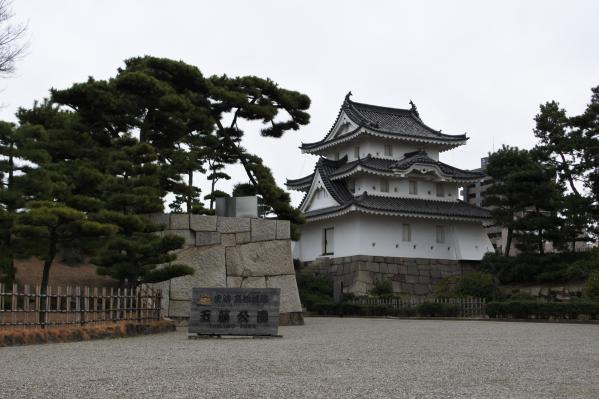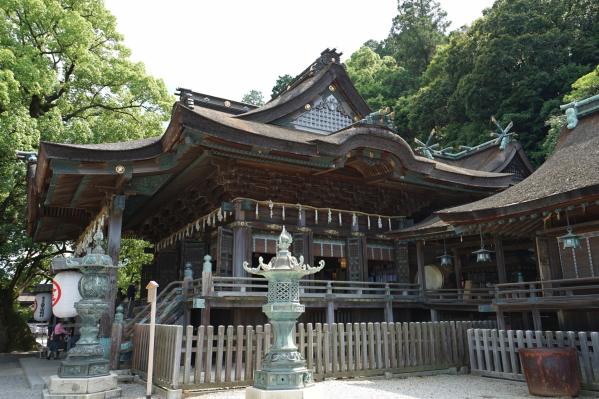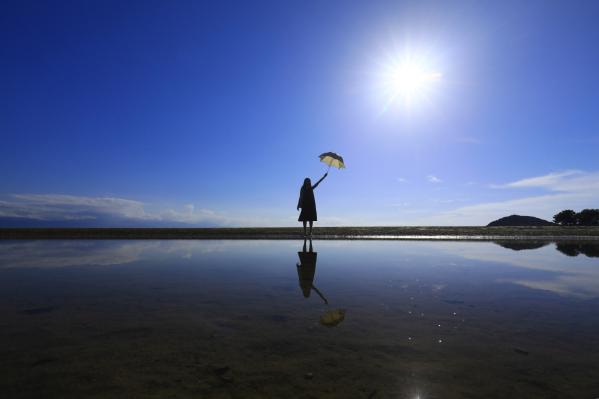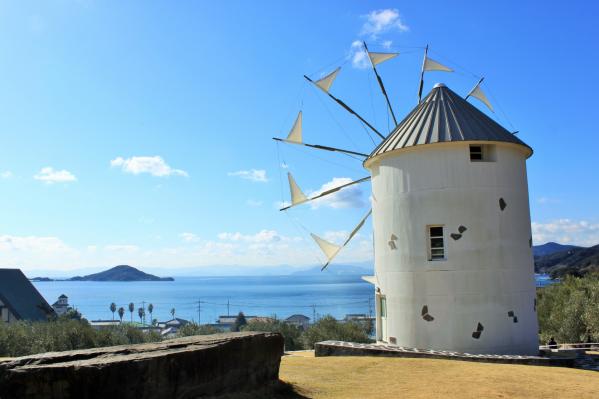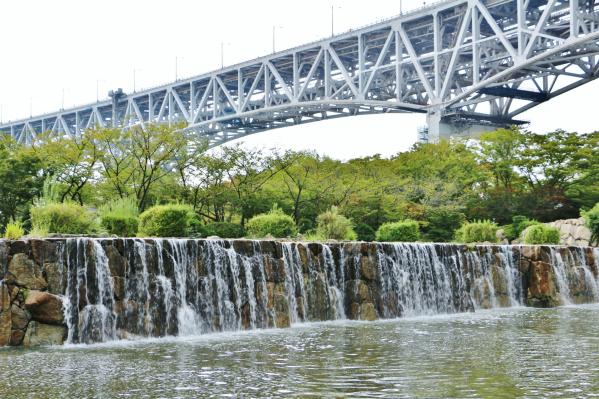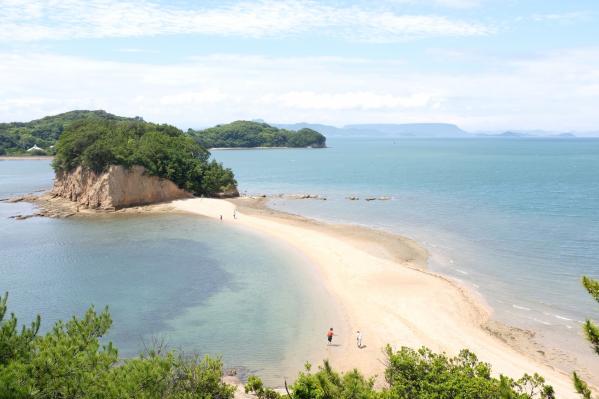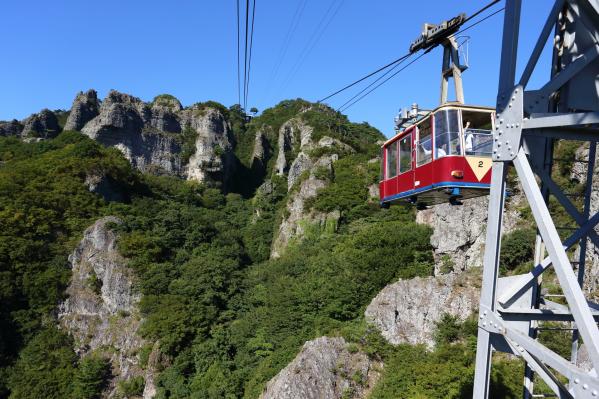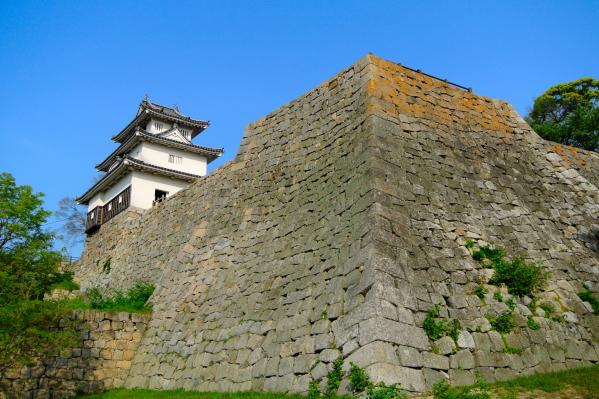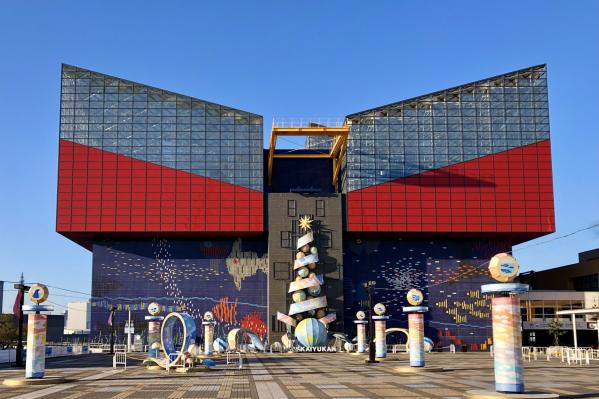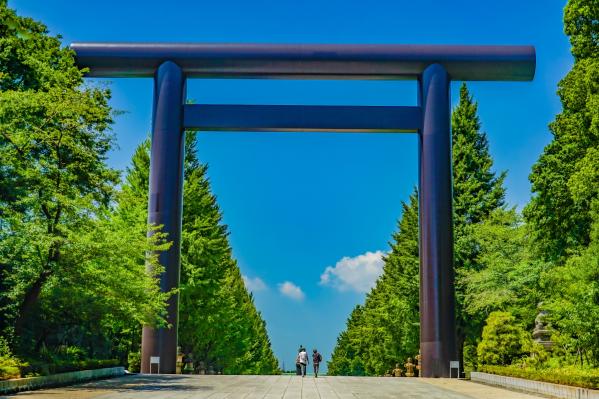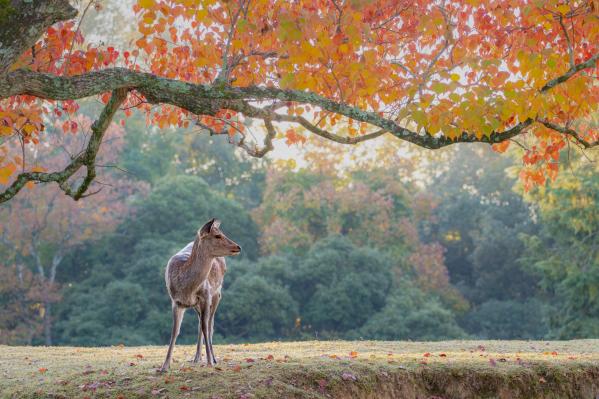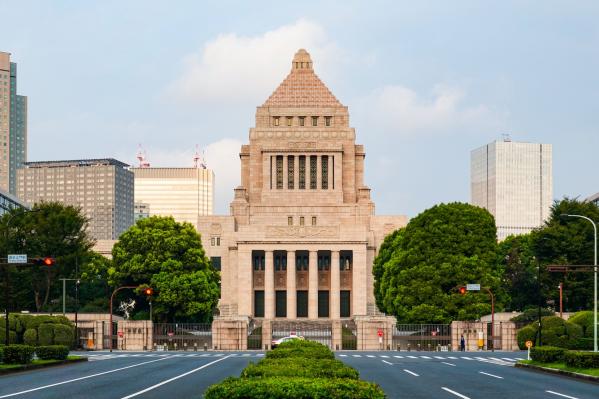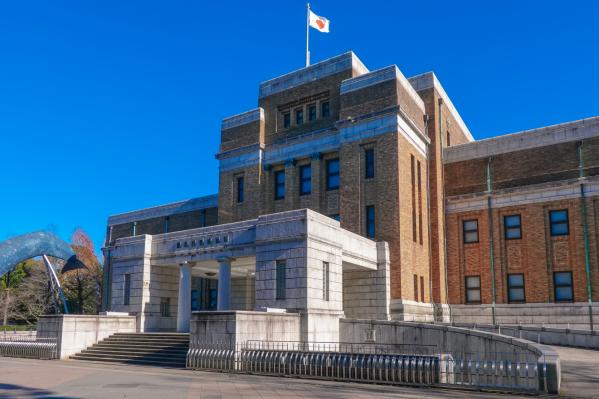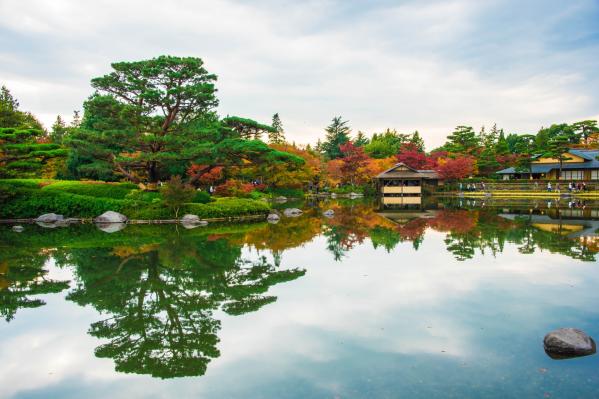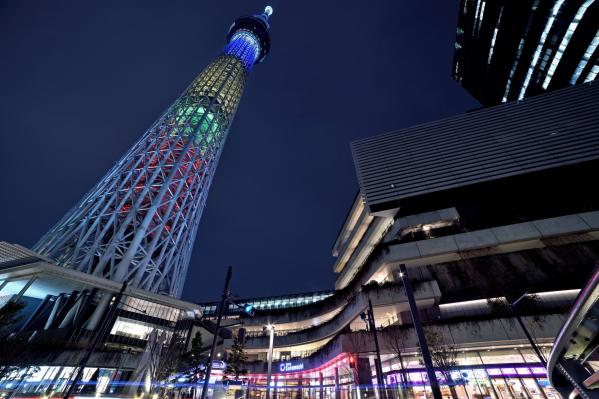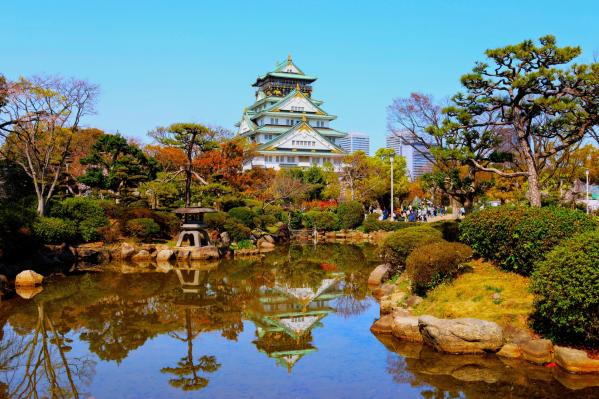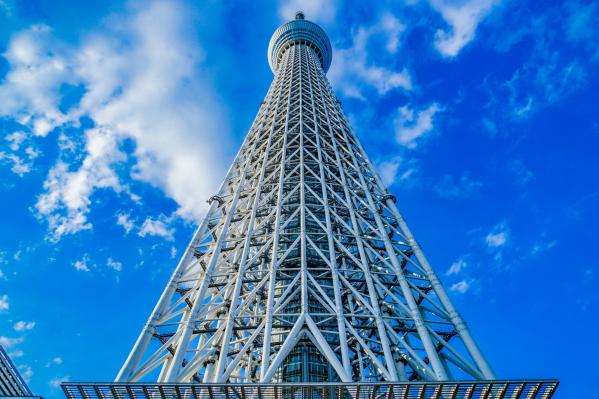
Ritsurin Garden
The park is designed around a large pond, representing mountains and valleys, with paths for strolling around the pond. Within the garden are six ponds and thirteen artificial hills, divided into the southern garden—dating back to the early to mid-Edo period—and the northern garden, which was developed into a modern park after the Meiji period. Each area offers a different landscape to enjoy.
Ritsurin Park's garden construction began in the mid-Kan'ei era and was expanded by successive feudal lords, including the Ikoma and Matsudaira families, eventually completing in 1745. It served as a residence for the Takamatsu Matsudaira family for 228 years before being opened to the public in the 8th year of the Meiji era. Today, it is designated as a special scenic spot and is highly regarded for its beauty.
Visitors can enjoy stunning views of beautiful pines, with highlights including "Tsurukame Matsu," "Hako Matsu," and "Neagari Goyō Matsu." This garden is known for its "shallow pond and linked promenade" design, allowing guests to enjoy different sceneries as they stroll, creating an enchanting experience with each step.
Ritsurin Park has also received a three-star rating, showcasing its outstanding beauty among Japanese gardens. The park features many stone arrangements and landscape elements that provide visitors with healing and inspiration.
Basic Information
- Spot Name
- Ritsurin Garden
- Location
- 〒760-007 1-20-16 Kuribayashi-cho, Takamatsu City, Kagawa Prefecture, Japan
- Access
- About 7 minutes by car from JR Takamatsu Station
20 minutes on foot from JR Ritsurin Station
3 minutes on foot from JR Ritsurin Park North Entrance Station
10 minutes on foot from Kotoden Ritsurin Park Station
1 minute on foot from Ritsurin Park Mae Bus Stop
About 30 minutes by car from Takamatsu Airport
About 20 minutes by car from Takamatsu Nishi IC
About 15 minutes by car from Takamatsu Chuo IC
*Taxi is convenient for accessing Ritsurin Park from JR Takamatsu Station and Takamatsu Airport. - Parking
- Kuritsubo Park East Gate Parking Lot: 30 cars, 13 buses
Kuritsubo Park North Gate Parking Lot: 32 cars - Business Hours
- Nearly from sunrise to sunset
_January 7:00 AM to 5:00 PM
_February 7:00 AM to 5:30 PM
_March 6:30 AM to 6:00 PM
_April 5:30 AM to 6:30 PM
_May 5:30 AM to 6:30 PM
_June 5:30 AM to 7:00 PM
_July 5:30 AM to 7:00 PM
_August 5:30 AM to 7:00 PM
_September 5:30 AM to 6:30 PM
_October 6:00 AM to 5:30 PM
_November 6:30 AM to 5:00 PM
_December 7:00 AM to 5:00 PM - Regular Holiday
- Open year-round.
- Fees
- Adults 410 yen / Children 170 yen
- Contact Information
- Phone Number:087-833-7411
- Official Website
Map
Detailed Information
Ritsurin Garden, designated as a national special scenic spot, is the largest cultural heritage garden in Japan. Completed nearly 300 years ago as a villa for the Matsudaira family, lords of the Takamatsu domain, it was carefully reconstructed by successive lords. Skillfully arranged against the lush backdrop of Shiun Mountain, the garden features six ponds and thirteen man-made hills, boasting an exceptional layout and stonework characteristic of an early Edo period strolling-style garden, enriched with elegant beauty found in wood and stone.
Blessed with seasonal beauty through spring, summer, autumn, and winter, the blooming flowers here create a rich diversity of beauty, seen alongside a thousand carefully tended pine trees, each step revealing a unique landscape.
▶The largest cultural heritage garden in Japan!
The flat section of Ritsurin Garden spans approximately 16.2 hectares, equivalent to about 3.5 Tokyo Domes. This alone makes it one of the largest among feudal lord gardens, but when including the backdrop of Shiun Mountain, the total area reaches an impressive 75 hectares, equal to 16 Tokyo Domes, making it the largest designated garden in Japan. The feudal lord garden features undulating terrain around a large pond, expressing mountains and valleys, allowing visitors to enjoy various scenic views as they stroll around. With its six ponds and thirteen man-made hills, Ritsurin Garden is divided into a southern garden with an excellent layout and stonework from the early Edo period, and a northern garden, modernized after the Meiji period. Each area offers diverse landscapes for visitors to enjoy.
▶Elegant beauty in wood and stone at Ritsurin Garden
Originally a small garden owned by local warlord Sato in the late 16th century, the foundational water management works were initiated around 1631 by Nishijima Hachibei, a retainer of the Ikoma clan who governed the area. The garden’s creation was carried on by Matsudaira Yorishige, the first lord of the Takamatsu domain from 1642, completing it in 1745 during the 5th lord, Yoritaka's era. It served as the Matsudaira family's villa for 228 years until the Meiji Restoration. The garden opened to the public as a prefectural park in 1875 and was designated as a "Special Scenic Spot" for its particularly high value in 1953. According to a high-grade elementary school textbook published at the end of the Meiji era, Ritsurin Garden was noted for having "a refined beauty in its trees and stones" surpassing that of the renowned gardens of Kairakuen in Mito, Kenrokuen in Kanazawa, and Korakuen in Okayama, which are known as "three famous gardens of Japan."
▶A true "national treasure of gardens" utilizing Edo period landscaping techniques!
There are 24 designated gardens recognized across the country as “national treasures of gardens,” of which 13 are located in Kyoto, mostly pursuing views from specific vantage points (known as "sitting view"). In contrast, Ritsurin Garden employs the "pond-strolling style" developed during the Edo period, arranging ponds and hills over a vast area, allowing visitors to enjoy changing landscapes as they walk through. This diversity embodies its charm of "one step, one scenery," where every footstep reveals a changing view showcasing a wealth of seasonal beauty intertwined with concepts of “wabi” and “sabi.”
▶A three-star attraction recognized globally!
Ritsurin Garden has been awarded the highest rating of three stars by the French travel guidebook "Michelin Green Guide Japan," indicating that it is "worth a special trip" (first published in March 2009). It was ranked 3rd in the "2011 Japanese Garden Rankings" by an American magazine specializing in Japanese gardens, particularly recognizing the quality of the garden and the beauty of the pines. Furthermore, in June 2016, it was selected 15th in the list of "Popular Tourist Spots for Foreigners in 2016," compiled by TripAdvisor Inc., based on foreign language reviews posted between April 2015 and March 2016. Additionally, in March 2015, a sister garden partnership was established with the Huntington Library, Art Collections, and Botanical Gardens in the United States.
▶Beauty of pines: "one skin, two branches, three shapes"
When observing pines, the points of appreciation are referred to as "one skin (bark pattern), two branches (branch structure), three shapes (tree form)." First, the "skin" reflects the surface of the trunk, showcasing its age, ruggedness, and resilience, embodying the strength of life that has endured harshness. Next, "branches" refer to their shape, and finally, "shape" pertains to the overall tree form. Once you can appreciate the majesty of the pines, you have developed an aesthetic sensibility worthy of its beauty.
By focusing on these points, a walk through Ritsurin Garden becomes even more enjoyable. A notable feature is the "Tsurukame-Matsu," resembling a crane soaring above a stone resembling a turtle, said to be the most beautiful tree in the garden. The "Hakobun," which has a fantastic sculptural beauty, resembles a box, while the "Neagari Goyomatsu," a large tree gifted from the shogunate, stands 8 meters tall and has a trunk circumference of 3.5 meters, exuding a strong presence. These three great pines of Ritsurin Garden are a must-see.
▶Creating diverse garden scenery
In feudal lord gardens, unique stones are placed around ponds and islands to create picturesque views. During the era of the second lord of the Takamatsu domain, Matsudaira Yoritune, it's said that to relieve drought-stricken residents, they were asked to bring stones and wood in exchange for food. This is when the "Mikaeri Shishi," resembling a lion looking back, and the "Botan Ishi," shaped like a peony flower, began to be placed in the garden. Additionally, "Sho-Fuda," created during the Muromachi period, features 110 stones in the center, 15 on the east side, and 17 on the west side to form a hill. One of the islands called "Sengyo" floating on the southern lake models the legendary Mount Hōrai in China where immortals reside, evoking imagery of steep Chinese mountains often depicted in ink paintings. Each stone in the garden carries its own story, making it enjoyable to explore their narratives.
Ritsurin Garden Movies
Kagawa Tourist Attractions
View ListShiseki Takamatsu Castle Ruins and Tamamo Park
Takamatsu Castle Ruins and Tamamo Park, designated as a national historic site, is a park that has been developed around the remains of Takamatsu Castle, which serve...
Kotohira Shrine
Konpira Shrine, commonly known as "Sanuki Konpira-san," is a sacred place located on the slopes of Mount Zoto. This shrine is revered as the deity of the sea and is ...
Chichibu Shore
"Chichibugahama" in Mitoyo City, Kagawa Prefecture, is a seaside resort known for its approximately 1 km long beach and beautiful sunsets. During low tide, the water...
Michi-no-Eki "Shodoshima Olive Park"
The "Shodoshima Olive Park" roadside station is located on a small hill that offers a panoramic view of the Seto Inland Sea. It is a Mediterranean-themed spot featur...
Seto Ohashi Memorial Park
Seto Ohashi Memorial Park is a seaside park located in an ideal spot with a close view of the Seto Ohashi Bridge. Within the park, there is a memorial hall where vis...
Angel Road
Angel Road is a romantic spot located on Shodoshima Island, featuring a sandy path that only appears during low tide, twice a day. This path connects four islands, a...
Kankakei Ropeway
The Kankakei Ropeway is a cable car that leads to the summit of Kankakei, located within the Setonaikai National Park. Kankakei is counted among Japan's three great ...
Marugame Castle
Marugame Castle, boasting a history of 400 years, is a renowned stone castle located in Marugame City, Kagawa Prefecture. Built on Kameyama Mountain at an elevation ...








